If that’s your answer to queries about where your elderly mother
lives, you and your mom are part of one solution for the looming problem
of how to care for America’s rapidly aging population, which is growing
at the rate of some 1.7 million seniors each year.
Maybe your mother lives in a portable self-contained medical cottage
in your backyard. Dubbed “Granny Pods,” these pre-fabricated and
pre-equipped medical cottages can be installed in a backyard behind a
caregiver’s home, zoning laws permitting, and hooked up to the existing
sewer, water and power lines.
Though some critics see granny pods as little more than storage
containers for the elderly, over time these increasingly sophisticated
medical cottages have become viewed as viable alternatives to expensive
long-term care facilities, one that keeps aging seniors close to
families while offering supervision and care when needed, along with the
independence seniors desire.
The prototype “granny pod” units cost up to $125,000 installed, have
standard safety features like hand railings, defibrillators and first
aid supplies, lighted floorboards and a soft floor to minimize damage
from falls.
The high tech units are also equipped with interactive video and
devices that monitor vital signs, like blood pressure and blood glucose,
and transmit real time readings to caregivers and physicians.
Cameras
at floor level and sensors alert caregivers to a fall, the toilet seat
records weight and temperature, a hammock-like chair lift transports a
resident from bed-to-bathroom, and a computer reminds residents when it
is time to take medications.
Better Care for Seniors
The Reverend Kenneth Dupin, a Methodist minister from Salem, VA, gets
credit for the Granny Pod concept, though that’s not what he called the
units. (According to the Washington Post, credit for that goes to a Fairfax County supervisor who equated the pods to storage containers.)
As the story goes, after visiting a depressed parishioner whose family had moved her to a nursing home,
Rev. Dupin decided America should do better for its aging population.
He founded a company, N2Care, and, working with Virginia Tech Research
Center in Blacksburg, VA, designed the MEDCottage, now known as the
granny pod.
Though several versions now exist, the basic MEDCottage is about 12
by 24 feet, or the size of a master bedroom, has vinyl siding, double
French doors (to accommodate a wheelchair and hospital equipment) and
looks like a small bungalow. Inside, it resembles a hotel suite, with
living space, small kitchen and bathroom.
Though the initial cost may seem steep, proponents point out that
nursing home care is also expensive, costing upwards of $50,000 a year
for a semi-private room, depending on location, and the company will buy
back the units when no longer needed.
Granny pods and other auxiliary dwelling units, or ADUs, offer a
blend of independence and 24/7 caregiving, plus closeness to family and
friends instead of isolation in a distant nursing home.
Helping Meet the Care Need
More practically, these modular medical care units may be essential
to providing care for the soaring numbers of seniors, a number the
Census Bureau predicts will more than double from 35 million in 2000 to
more than 70 million by 2030.
Since Genworth, a firm specializing in long-term care and life
insurance, predicts that at least 70 percent of the nation’s elderly
will require long-term care at some time in their lives, the nation’s
current 15,700 long-term care facilities may not be sufficient to meet the need. Something more is needed and these self-contained medical units could meet that need.
The MEDCottage, the original granny pod, may have received the most
publicity, but as the auxiliary care unit idea has caught on, others
have entered the field. Among the other versions are ASAPs, or
Architectural Solutions for Aging Populations, developed by an
architectural firm in San Francisco.
Fab Cab in Seattle also has a
pre-fabricated version, as do PALS (Practical Assisted Living Solutions)
in Rockfall, Conn., and ECHOAs or Elderly Cottage Housing Opportunity
Additions. Larson Shores, an architecture firm in the San Francisco Bay
Area, provides pre-designed in-law cottages that are accessible,
affordable, and sustainable, and built on the owner’s property.
Opposition
Local zoning laws have stalled the growth of the “granny pod”
movement in some parts of the country. In 2010, Virginia amended state
zoning laws to permit the addition of a temporary health care structure
behind an existing home, but with the stipulation that a physician
documented the medical need. Other states, including California and New
York, followed. (If you are not sure about your area, check with your
local agency on aging or the Accessory Dwellings website for regulations by city and state.)
Yet the prefabricated units still encounter some opposition,
especially from potential neighbors who worry about overcrowding, and
warn that adding seniors and disabled residents will change the
character of a neighborhood, increase traffic, and affect property
values. Too, some people simply don’t like the idea of “warehousing” the
elderly in a self-contained unit, even one that is close to family and
friends.
Full Article & Source:
My Mother Lives in the Backyard: The Granny Pod Evolution
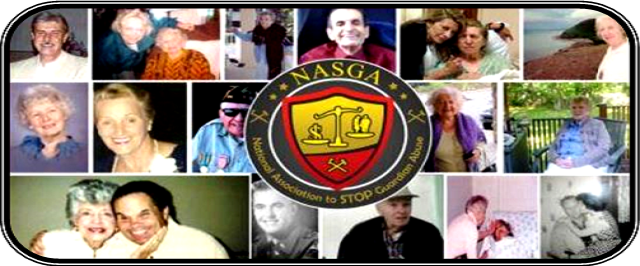
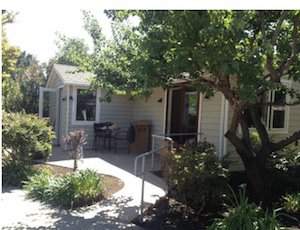
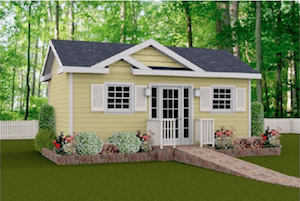
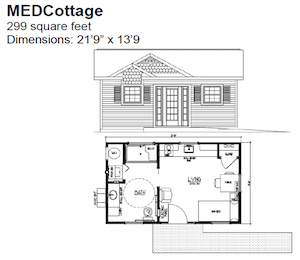
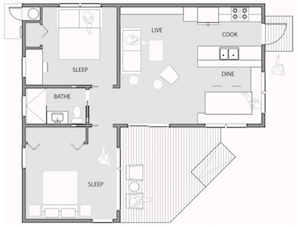
1 comment:
I think these granny pods are wonderful!
Post a Comment